ADSactly Mystery: Vampire Burials
Dracula, Lestat, Edward Cullen, Bella - our popular culture is full of charismatic vampires and each generation has its favorites. Seriously, who could resist the charms of a vampire played by Tom Cruise or Brad Pitt? Well, this only goes for modern times. In the past, however, hundreds and thousands of years ago, people had a lot more respect for vampires, feared them and did their best to protect themselves from the undead.
Many of the tricks to keep vampires away that we find in books or movies are not the invention of brilliant writers for the most part. They come from ancient rituals people practiced to make sure vampires did not rise up from their graves to haunt their communities.
One of the oldest examples of burial ritual meant to prevent the dead from coming back was found in a necropolis in Italy and dates back to the end of the first century BC. Situated near Lugnano, the place is called La Necropola dei Bambini, (The Children’s Cemetery), as all those buried there are babies and toddlers, most under the age of three. However, a team of American archaeologists discovered a tomb of a ten-year old child, buried with a rock in its mouth, one of the rituals used across Europe to keep vampires in their graves. Still, according to experts, most of the children buried there were victims of a malaria epidemic, known to have swept the area. Hard to say why the poor child was given a vampire burial. Maybe it is because the people didn’t quite understand how epidemics worked and were afraid the victims might rise from their graves and infect others.
The Lugnano graveyard is a very weird place. A three year old girl was found buried with stones weighing down her hands and feet, a preventative measure against the child’s rising from the grave.
That’s not all. The graveyard yielded evidence of magic practices, with tombs containing toad bones, raven talons and several bronze cauldrons filled with the remains of at least 12 puppies, that seemed to have been sacrificed for unknown reasons.
According to University of Arizona archaeologist Jordan Wilson:
"Anytime you can look at burials, they're significant because they provide a window into ancient minds. We have a saying in bioarchaeology: 'The dead don't bury themselves.' We can tell a lot about people's beliefs and hopes by the way they treat the dead."
Long held beliefs of pagan origin concerning vampires can be found all over Europe and some endured till modern times. No evidence of bloodsucking habits were needed to proclaim someone a vampire. It was thought that particularly bad people could rise from their graves and unleash all sorts of evils upon a community.
One way of ensuring they stay put was burying those people face down in their graves, probably to confound them, so they won’t find their way back to the land of the living. Weighing them down was another safety precaution. Archaeologists believe that the practice of jamming a stone in their mouths would prevent them from feeding in the afterlife, particularly from preying upon the living.
A 16-17th grave found in Poland contains the skeleton of an adult with a stone in his mouth. The stone was inserted with such force it knocked the man’s upper teeth off. At the same, he had a hole in his leg, evidence of a pole being struck through, also in an effort to keep him pinned to the ground.
In modern times, we have been led to believe that the people thought to be vampires in ancient times were suffering from a condition called porphyria, a disease that causes the skin to erupt in blisters and rashes, which can be triggered by exposure to sunlight.
However, experts think the popular belief in the undead comes from observing the changes in the corpses found in common graves, used to bury victims of epidemics. In the past, Europe has been swept by massive epidemics, especially the plague, or the Black Death. When another epidemic struck a community it was common practice to reopen the mass grave to bury the new victims. Some of the decomposing old corpses were found with shrouds torn and stained at the mouths, the result of fluids seeping from the dead body. However, people had little idea of what happened with a decomposing body and thought the stains were proof the dead had risen from their graves to feed off the living.
People in England also believed in vampires. A couple of years ago, in Northamptonshire, an adult male from the third or fourth century was found buried face down with his tongue removed and replaced with a stone.
One of the most popular rituals used to keep the vampires in their graves was driving an iron rod or a wooden pole through their chest, preferably through the heart.
In Bulgaria, more than 100 vampire tombs have been found. In the above image you can see a 800-year old skeleton discovered near the Bulgarian historical town of Sozopol, with an iron rod through his chest.
I wish I could say such practices are all in the past, but, in Eastern Europe, we’ve had vampire scare stories in very recent times. In Bulgaria, as well as in my country, Romania. Unfortunately.
For instance, in 2005, a terrible incident in the Romanian village of Marotinu de Sus made the news around the world. The deceased was a certain Petru Toma, a farmer with a penchant for drinking. For some reason, his own sister complained the dead man had come back to haunt them and made her daughter-in-law ill.
Six men took to performing the ritual used in case a dead person has returned as a strigoi, local term for vampire. The men dug the remains out, cut out the heart and burnt it, drinking the ashes mixed with water. The corpse was properly poked with rods before being returned to its resting place.
Authorities intervened, the six man were sentenced to a few months in jail, which they never served, but all the international scandal did nothing to change the local people’s belief in strigoi. Some time after the facts, a reporter went back to the village and found the sick woman was feeling much better, proof, they said, that the ritual worked. Also, the villagers admitted, off the record, such rituals are still practiced, but in secrecy, with only the immediate family involved so as not to attract unwanted attention.
Old beliefs die hard, what can I say? And, yes, Romania is the birthplace of the legendary count Dracula, but, no, Vlad Dracul was not a vampire, but only a very cruel ruler, who enjoyed impaling his enemies.
Post authored by @ladyrebecca
References: 1, 2.
Click the coin below to join our Discord Server
)
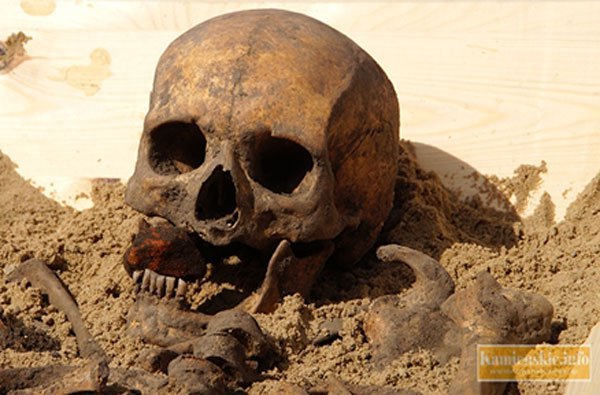
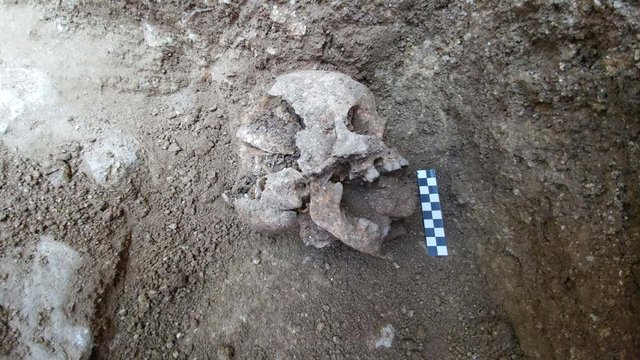
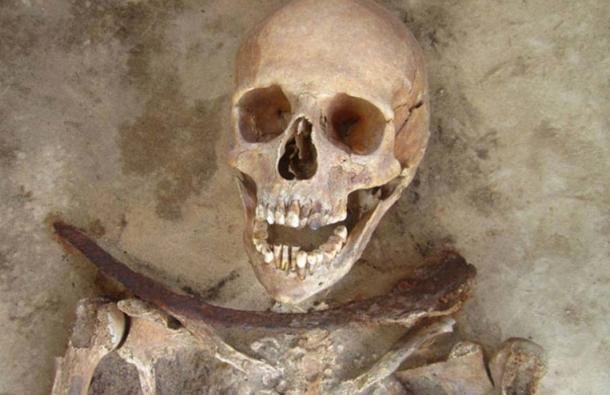
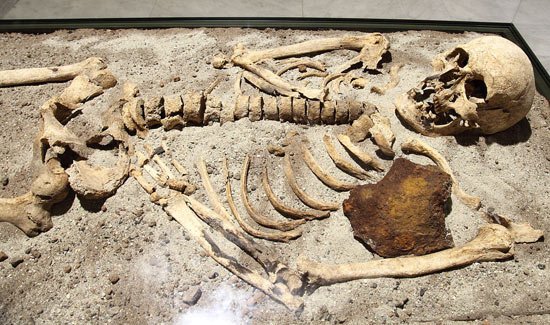
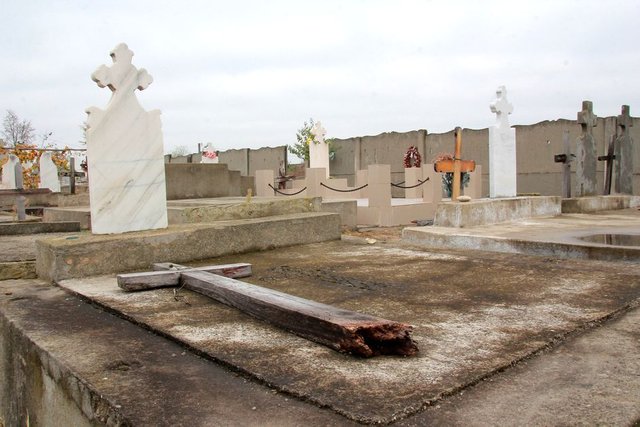
This is really interesting. I guess I belong to the Dracula generation, maybe that's why I find other depictions of vampires at best boring.
Bella and all the gang of series finished the genre for me.
I did not know about the burial rituals. Fascinating.
As you said, old beliefs and practices die hard. No stone is heavy enough to keep them burried.
The sad thing is that real evil does not match any legend or myth, and it lives among us dressed casually or in fine clothes.
Couldn't agree with you more!
Very interesting this post, @ladyrebecca. I didn't know about this antivampire practice. The images are terrifying to me and to imagine that there are still people doing things like these, seems unreal. In some Venezuelan villages, especially those with a very strong African influence, there are still rituals to bury the dead. In fact, I remember reading at one time that some people dance to the dead, and give them drink and food, as a last action and as a farewell. A little strange! Greetings
I was very surprised, too, to discover this practice of putting a stone in the mouth of the dead... I was probably under the influence of movies, which generally show the trick with a pole, not to mention garlic and the cross.
Interesting your post, @ladyrebecca. I suppose there is a lot of anthropological and archaeological material on that subject. Death rituals (funeral and other) are so diverse in the world. I remember that dense and accurate book Man before death by the historian Philippe Ariès.
As you say all the legend about vampires goes back to very remote times. The fictional narrations of John Polidori, The Vampire (1819), and Bram Stoker, "Dracula" (1897), immersed in the Gothic and romantic atmosphere that characterized the European 19th century, are of great value for their literary dissemination. And then, with Nosferatu, a symphony of horror (1922) by Murnau, he goes on to the cinema. From then on, a long mass and commercial production has even impoverished this legend.
Death will continue to be the subject of our popular speculation and creative imagination.
Greetings.
Speaking of commercial use of legends, I visited Dracula's supposed castle, which is here in Romania, and was not impressed at all. In another city, we found a Dracula exhibit, with an actor rising dramatically from the coffin, even my son laughed.. and he was quite young at the time... But on the other hand, we get thousands of Americans willing to pay a lot of money to spend Halloween in Dracula's Castle so at least someone makes a profit!
One of these days we're going to unbury something truly mythical... and this world is going to see crazier times than we ever could have imagined! ;) Wishful thinking.... maybe... lol! :P
I do hope we will find more clues to our past... my bet is on another humanity that might have existed before our civilization... but, as you say, I'm afraid it's wishful thinking, indeed!
Hi, @adsactly!
You just got a 0.3% upvote from SteemPlus!
To get higher upvotes, earn more SteemPlus Points (SPP). On your Steemit wallet, check your SPP balance and click on "How to earn SPP?" to find out all the ways to earn.
If you're not using SteemPlus yet, please check our last posts in here to see the many ways in which SteemPlus can improve your Steem experience on Steemit and Busy.